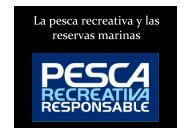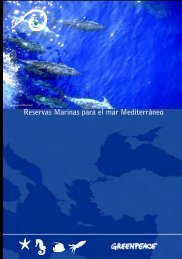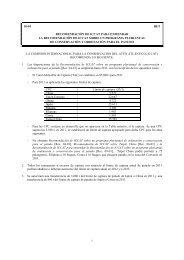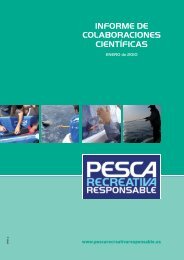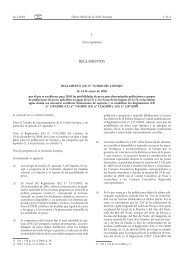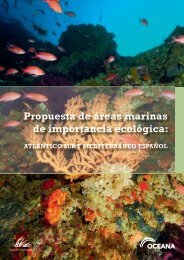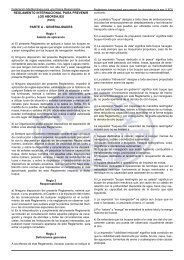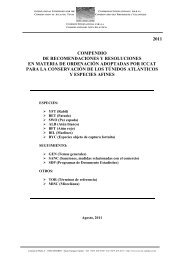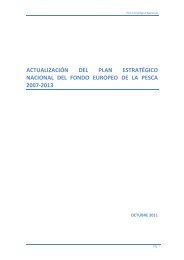C. hippurus - Confederación Española de Pesca Recreativa ...
C. hippurus - Confederación Española de Pesca Recreativa ...
C. hippurus - Confederación Española de Pesca Recreativa ...
Create successful ePaper yourself
Turn your PDF publications into a flip-book with our unique Google optimized e-Paper software.
1. Introduction<br />
The participation of recreational fishing actors in the management process of some<br />
fisheries resources is an opportunity for fishermen, scientists and administrations to<br />
achieve the goals of the Co<strong>de</strong> of Conduct for responsible fisheries of the FAO (FAO,<br />
1995) and to improve the implementation of the principles and recommendations of the<br />
Ecosystem Approach to Fisheries Management (EAF) in the Mediterranean Sea, in the<br />
framework of the GFCM.<br />
The Co<strong>de</strong> of Conduct promote the participation of all the interested domestic parties,<br />
having a legitimate interest in the use of fisheries resources, in the management process,<br />
by establishing arrangements for consulting them to gain their collaboration in achieving<br />
responsible fisheries, and the (EAF) recommends the stakehol<strong>de</strong>rs participation. Such<br />
participation may be implemented at many different levels of involvement of the<br />
stakehol<strong>de</strong>rs in the management process in data collection, knowledge-building, option<br />
analysis, <strong>de</strong>cision-making and even implementation, including enforcement (Garcia et al,<br />
2003).<br />
The GFCM recognizes the important role of the recreational fisheries in fishery<br />
management. Moreover, in 2010, a GFCM transversal meeting on recreational fisheries<br />
was un<strong>de</strong>rtaking providing with recommendations to the 2010 GFCM meeting.<br />
2. Dolphinfish fisheries in the Mediterranean Sea. The Spanish situation<br />
Dolphinfish is an epipelagic species inhabiting open waters, but also approaching the<br />
coast following ships and assembling in small groups below floating objects. It has<br />
pelagic eggs and larvae and spawning generally occurs during summer (June to<br />
September). It is worldwi<strong>de</strong> distributed in tropical and subtropical seas and is present in<br />
the Mediterranean Sea. Fishing aggregation <strong>de</strong>vices (FADs) are used to concentrate<br />
Dolphinfish before the nets are set. It is caught by trolling and by tuna longlining, and<br />
also occasionally with purse seines and driftnets (FAO Fish-Fin<strong>de</strong>r, 2011).<br />
A traditional small-scale fishery is carried out in the central Mediterranean (Sicily, Malta<br />
and Tunisia) and western part of the basin (Majorca Island) during summer-fall using<br />
FADs. This highly migratory middle size pelagic fish seems to be a single stock in the<br />
central-western Mediterranean and should be jointly managed (COPEMED, 2003). The<br />
Balearic island artisanal fishery (Masutti & Morales Nin, 1995) means to be the most<br />
important in Spanish waters.<br />
This species is also recognized as a premier game and food fish wherever it is found.<br />
Historically harvested almost wholly by recreational fishermen around the world, only in<br />
recent <strong>de</strong>ca<strong>de</strong>s caught the attention of commercial fishermen. Today the species is a<br />
shared stock between recreational and commercial interests (Hammond, Cooperative<br />
Science Services, LLC).<br />
The bearing of recreational fisheries worldwi<strong>de</strong> and in the Mediterranean is very<br />
important, consi<strong>de</strong>ring that only U.S. sports fishermen harvested more than 1.45 million<br />
Dolphinfish from the Gulf of Mexico, Atlantic and Caribbean in 2008. (MRFSS Data,<br />
Dolphinfish Research Newsletter. August 2009).<br />
2




